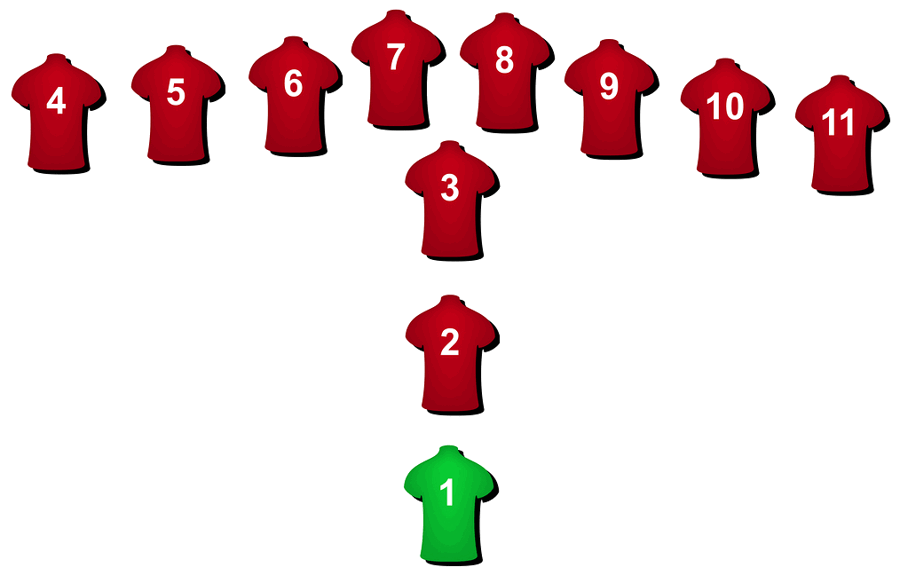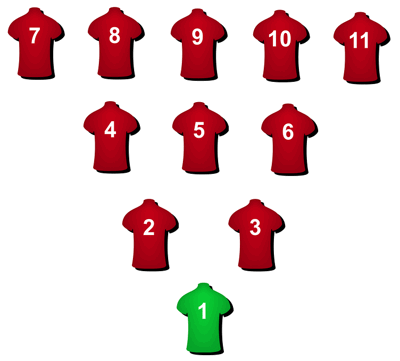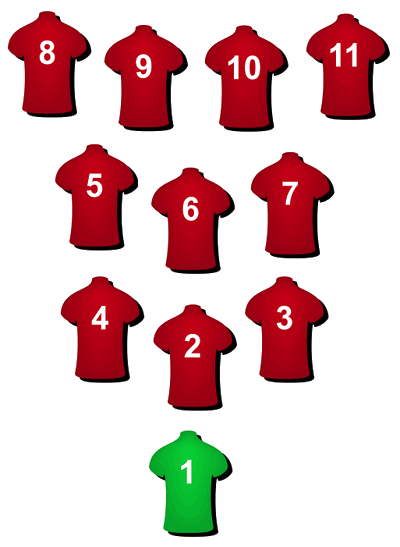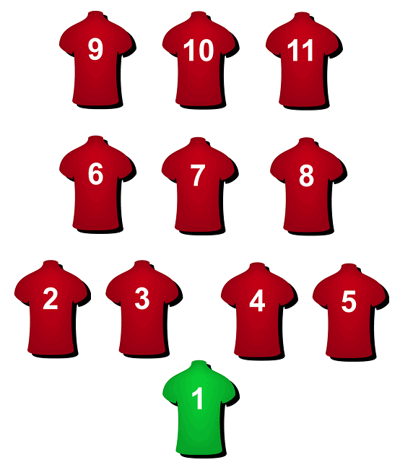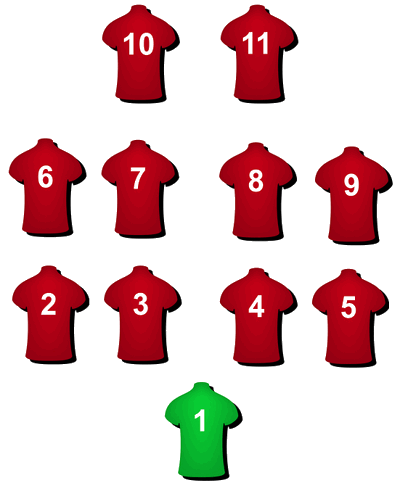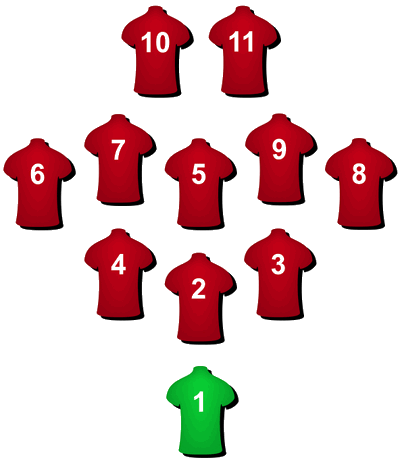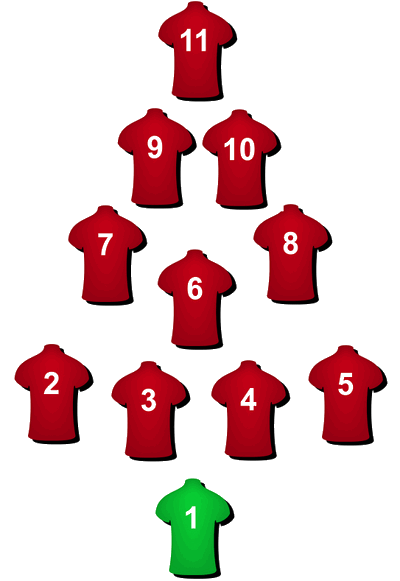During the early years of football, the sport was closely linked to rugby. However, as football began to establish itself as a separate entity, formations played a crucial role in its evolution. In this article, we’ll take a closer look at the fascinating history of football formations and how they have changed over the years.
The Early Years: 1-1-8 Formation
When football first emerged as a sport, defense was not a priority. Teams would often play with just one defender and one midfielder, as seen in the 1-1-8 formation. Although it may seem unimaginable in modern football, this formation was not uncommon during the early days. In fact, the first international match between England and Scotland in 1872 saw both teams using variations of the 1-1-8 formation.
During this period, passing was not considered essential, and the game relied heavily on individual skills and dribbling.
The Shift Begins: 2-3-5 Formation
In 1877, Wrexham, a Welsh team, won the Welsh Cup using a 2-3-5 formation. This formation marked a significant shift towards a more balanced approach between attack and defense. Fullbacks were responsible for covering wingers, while halfbacks acted as a link between defense and attack. The centre halfback played a crucial role in marking the opposing team’s center forward and distributing the ball to the forwards.
The Scottish Influence: Rise of the Passing Game
The 1880s witnessed the arrival of Scottish players in English teams, bringing a more passing-focused style of play. Preston North End, led by William Sudell, won the Football League championship in its inaugural season in 1888 by employing a passing game. This success popularized the 2-3-5 formation and encouraged other teams to adopt similar tactics.
The Offside Rule Changes Everything: The WM Formation
In 1925, the introduction of the offside rule prompted a change in formations. Arsenal player Charlie Buchan suggested a switch from the 2-3-5 to the 3-3-4 formation, known as the WM formation. This new formation relied on a center halfback leading the offside trap and facilitated counter-attacking play. Arsenal’s success with this formation influenced other teams in the Football League.
The Birth of Modern Formations: 4-3-3 and Beyond
In the 1950s, Hungarian coach Gusztáv Sebes introduced the concept of changing formations during a match, leading to the birth of the 4-2-4 formation. The Brazilians then revolutionized formations by developing the 4-3-3, which focused on individual skills. England’s triumph in the 1966 World Cup showcased the effectiveness of the 4-3-3 formation.
A Defensive Mindset: 4-4-2 and 5-4-1
The 1970s saw a shift towards more defensive-minded formations. Italian coach Helenio Herrera introduced the 5-4-1 formation, while Swedish clubs embraced the 4-4-2 formation. These formations emphasized collective strategy and teamwork.
Attacking Returns: 3-5-2 Formation
In 1990, West Germany won the World Cup using the 3-5-2 formation. This formation put more emphasis on individual skills and allowed players to adapt their positioning based on the circumstances of the game. Despite being divisive initially, the 3-5-2 formation remains popular in modern football.
Formations: Ever-Changing and Customizable
Football formations continue to evolve as managers experiment with different strategies. No single formation is perfect, and factors such as player skills, opposition tactics, and game situations dictate the choice of formation. Even settled formations like 4-4-2 can be modified, such as with the introduction of the diamond midfield.
In the ever-evolving world of football, formations play a pivotal role in shaping the game. From the early simplistic approaches to the modern complex tactics, the history of football formations is a testament to the sport’s continuous reinvention.
FAQs
Q: Which formation is the best?
There is no definitive answer to this question, as the choice of formation depends on various factors such as team composition, playing style, and tactical approach. Different formations suit different teams and strategies.
Q: Can formations be changed during a match?
Yes, formations can be altered during a match to adapt to changing circumstances or exploit weaknesses in the opposition’s defense. Managers often make substitutions and tactical adjustments to optimize their team’s performance.
Q: How do formations impact gameplay?
Formations define the positioning and responsibilities of players on the field. They influence attacking and defensive strategies, player movement, and overall team dynamics. The right formation can maximize a team’s strengths and exploit opponents’ weaknesses.
Conclusion
Football formations have undergone significant changes throughout history, reflecting the evolution of the game. From the early attacking formations to the balanced approaches and defensive mindsets, formations have shaped the tactics, strategies, and overall gameplay. Football continues to reinvent itself, with managers experimenting and customizing formations to suit their teams’ needs. As the game progresses, it will be fascinating to see how formations continue to evolve and influence the beautiful game.
To learn more about football and stay updated with the latest news and updates, visit Movin993.
Nguồn: https://movin993.com
Danh mục: Tin tức

